 by "ttyymmnn" (ttyymmnn)
by "ttyymmnn" (ttyymmnn)
Published 12/20/2017 at 12:35
 by "ttyymmnn" (ttyymmnn)
by "ttyymmnn" (ttyymmnn)
Published 12/20/2017 at 12:35
Tags: Wingspan
; Planelopnik
STARS: 5
If somebody mentions the Vought Corsair, the first aircraft that comes to mind would probably be the F4U Corsair, the bent-winged behemoth that clawed its way through the Japanese navy during WWII and served into the Korean War. The name might also conjure up memories of the A-7 Corsair II, a worthy heir to the Corsair name that served as a powerful ground attack aircraft from the Vietnam War all the way through the Gulf War of 1991. While those are the two best-known Corsairs, they are not the only Corsairs. Vought used the Corsair name for a total of four aircraft, beginning in the 1920s.
!!! UNKNOWN CONTENT TYPE !!!
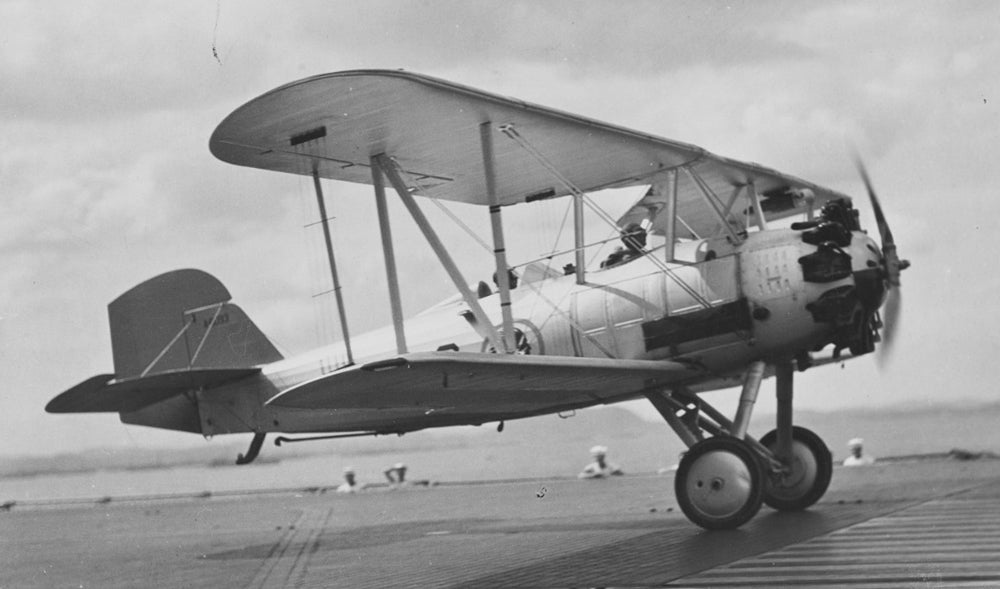
Chauncey “Chance” Vought got his start in the airplane business when he teamed with Birdseye Lewis to form the Lewis and Vought Corporation in 1917 as the US entered WWI. Lewis soon left the company, but Vought continued, and famously supplied the US Navy with its first carrier-borne fighter, the Vought VE-7 . Vought followed the success of the VE-7 with the Vought O2U Corsair , an observation and scout biplane and the first in the line of Navy, Marine Corps and Air Force Corsairs. The O2U was a traditional tube-framed biplane powered by a Pratt & Whitney radial engine (most used either the R-1340 Wasp or R-1690 Hornet ) and had a top speed of 167 mph. It could be fitted with either fixed landing gear or floats, and it was exported to a number of Latin American and European countries.
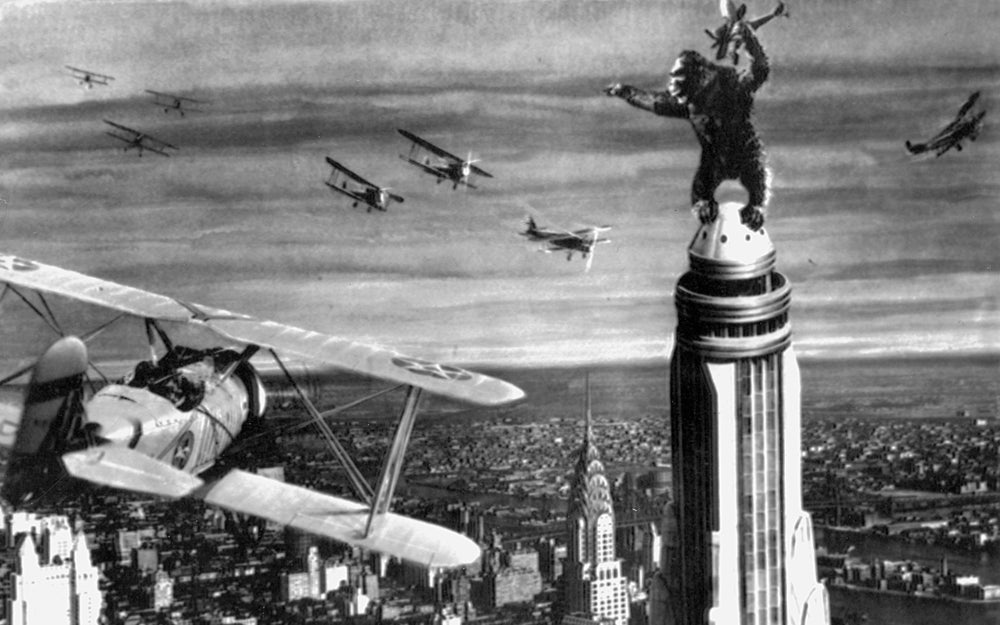
Corsairs saw combat in China and Peru and Thailand, and Mexico used them to help put down a military coup d’etat in 1929. A total of 580 were built in a number of variants, and though the O2U and its SU scout counterpart served into the early days of WWII, it never saw combat in American service. However, they did take part in the battle against a giant gorilla perched atop the Empire State Building in the 1933 movie King Kong .
!!! UNKNOWN CONTENT TYPE !!!

By 1932, the US Navy was looking for an all-metal biplane fighter, and Vought responded with the
XF3U
. But the Navy decided that it no longer wanted to use two-seat fighters, and the program was canceled. Not to let the good work go to waste, Vought converted the XF3U into a dive bomber, and the
SBU Corsair
was born. Unlike its earlier biplane predecessors, the SBU featured an enclosed cockpit, and its
R-1535 Twin Wasp Junior
14-cylinder engine gave it a top speed of 205 mph, the first Navy scout bomber to exceed 200 mph. In addition to its metal construction, the SBU offered other technological advances such as an adjustable
NACA cowling
and a
variable-pitch propeller
. The SBU Corsair took its maiden flight in 1933, but was obsolete by the beginning of WWII, and finished its days as a trainer.
!!! UNKNOWN CONTENT TYPE !!!
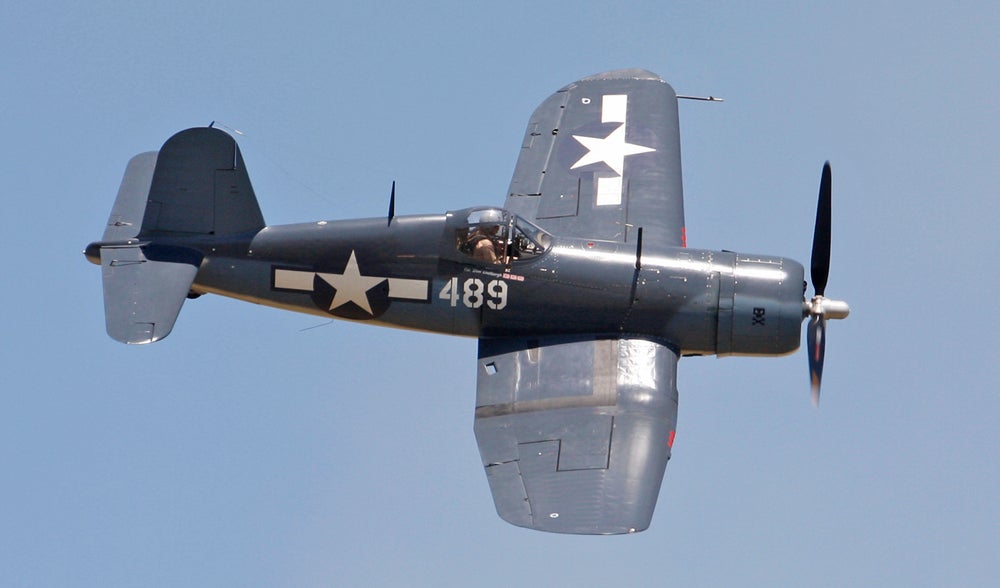
In 1938, with the threat of war looming in Europe, the US Navy requested proposals for a single-engine fighter that would be heavily armed and fly as fast as possible. Vought replied with their V-166B, the prototype of what would become one of the most famous and effective fighters of the Pacific war, the F4U Corsair . The F4U boasted a 2,000 horsepower Pratt & Whitney R-2800 Double Wasp 18-cylinder radial, the biggest engine available, and the largest propeller ever put on a Navy fighter, a massive, 14-foot diameter Hamilton Standard variable pitch prop with four blades (the prototype had a slightly smaller three-bladed propeller). The F4U is instantly recognizable for its inverted gull wing, but that design was not for any sort of aerodynamic advantage; it was to raise the nose of the fighter and keep the massive prop from striking the ground. The F4U entered service with the Navy, but poor visibility over the long nose caused problems with carrier landings, and the Corsair’s first combat missions were flown by ground-based Marines. Once the landing difficulties were sorted out (by the Royal Navy), the Corsair rejoined the Navy, where it quickly became one of the deadliest fighters of the war, with Navy pilots enjoying an 11:1 kill ratio over their Japanese adversaries, who nicknamed the Corsair “Whistling Death.” But the end of WWII did not mean the end of the remarkable Corsair. F4Us continued to provide tactical bombing and close air support into the Korean War, and were finally retired in 1953 after more than 12,500 had been produced by Vought and Goodyear.
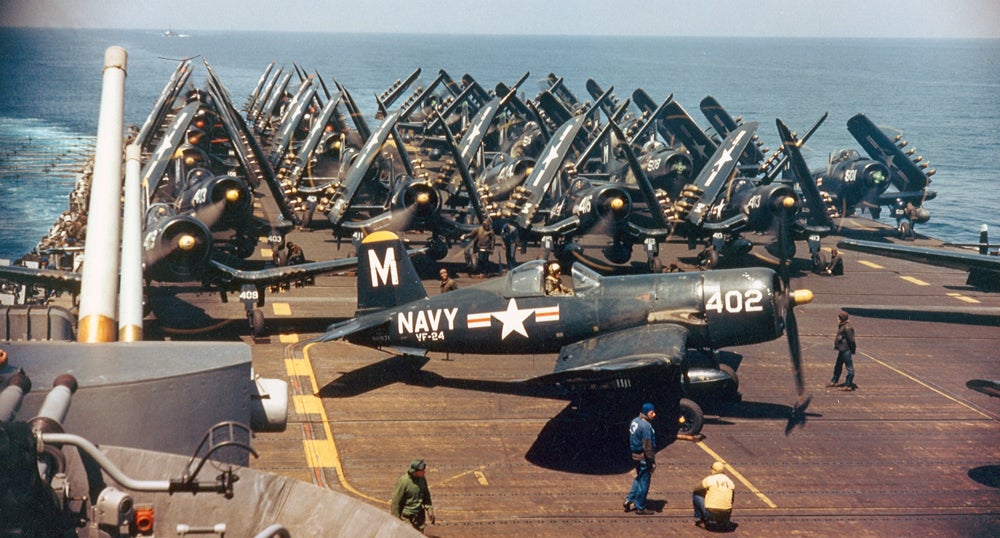
!!! UNKNOWN CONTENT TYPE !!!
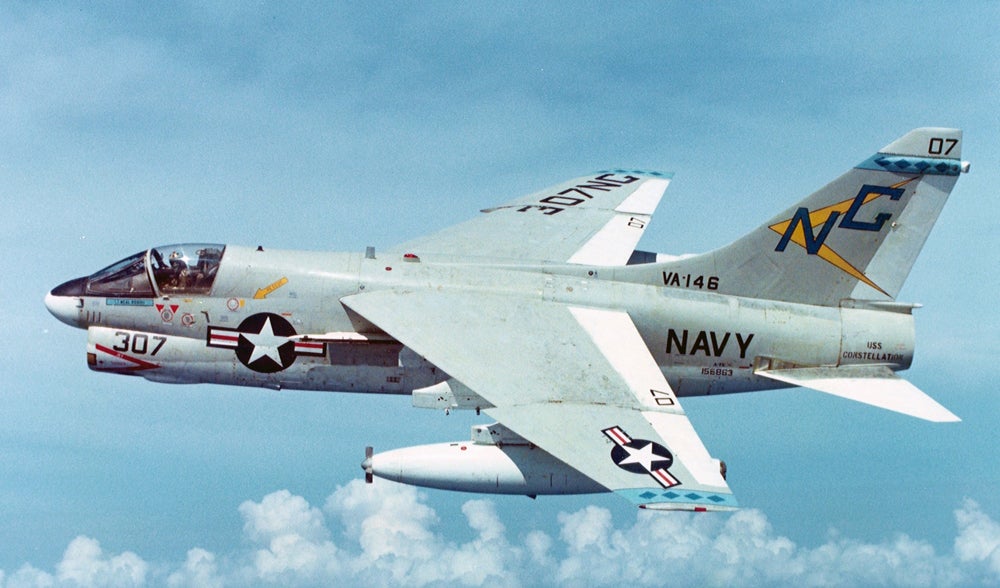
The ground attack lineage of the F4U was carried on by the only jet-powered Corsair, the LTV A-7 Corsair II (Vought, through mergers, had become known as Ling-Temco-Vought). The A-7 was developed as a replacement for the Douglas A-4 Skyhawk to create a powerful and accurate tactical fighter-bomber with greater range and a heavier payload. With its high wing and gaping chin air intake, the Corsair II resembled a huskier sibling of the Vought F-8 Crusader , and its Allison TF41 turbofan (a license-built version of the Rolls-Royce Spey ) gave it a top speed of 690 mph. The Corsair II entered service with the US Navy in 1967, and eventually served both the Navy and the US Air Force. It first saw action in the Vietnam War, where it proved to be a potent ground attack bomber and close support asset. The Corsair II fought until the very last days of the Vietnam War, and Air Force A-7Es were relegated to reserve units following the conflict. The Navy, however, continued flying the Corsair II, and it saw action in the skies over Grenada , Lebanon and Libya , and made its final combat sorties during Operation Desert Storm in 1991. A total of 1,569 Corsair IIs were produced, and it was retired from Navy service in 1991 and Air National Guard service in 1993.
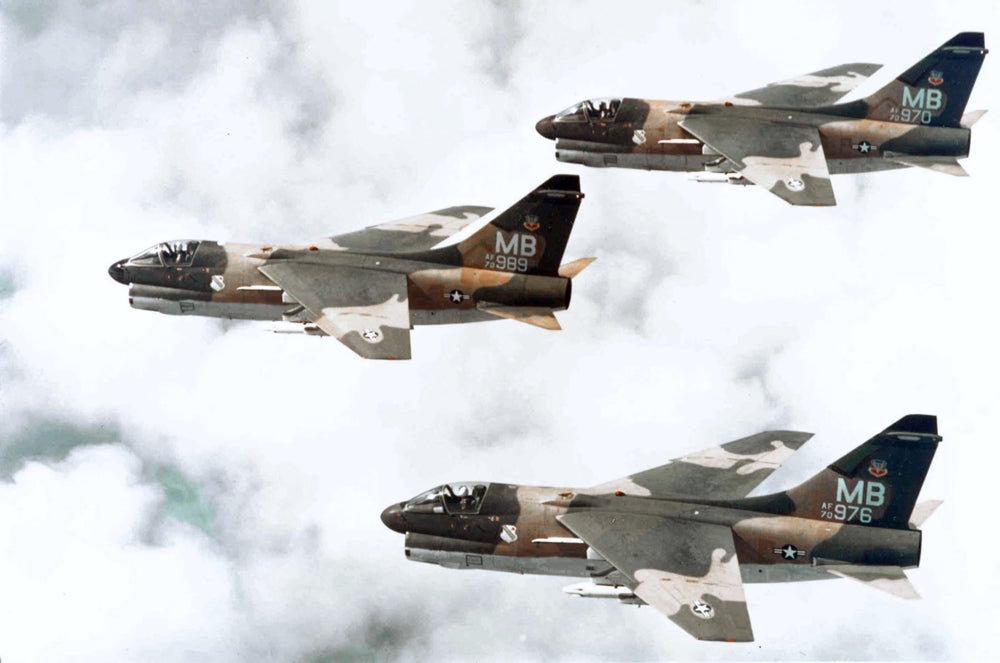

!!! UNKNOWN CONTENT TYPE !!!
Wingspan will be taking a couple of weeks off for the holidays. Look for return flights starting back up in January. Happy Holidays to all, and thanks for reading!
!!! UNKNOWN CONTENT TYPE !!!
!!! UNKNOWN CONTENT TYPE !!!
!!! UNKNOWN CONTENT TYPE !!!
!!! UNKNOWN CONTENT TYPE !!!
!!! UNKNOWN CONTENT TYPE !!!
!!! UNKNOWN CONTENT TYPE !!!
!!! UNKNOWN CONTENT TYPE !!!
If you enjoyed this post, please join in the conversation and let me know. For more posts about aviation, aviation history and aircraft oddities, head over to
Wingspan
.
!!! UNKNOWN CONTENT TYPE !!!
 "Chariotoflove" (chariotoflove)
"Chariotoflove" (chariotoflove)
12/20/2017 at 12:47, STARS: 2
The F4U is my all-time favorite military plane because of my childhood watching Black Sheep on TV, and because those wings are so darn cool.
I think you need to do a Christmas special on Santa’s sleigh versions through the years before you sign off for the holidays.
 "facw" (facw)
"facw" (facw)
12/20/2017 at 12:49, STARS: 1
I’m an (the only?) A-7 fan.
 "ttyymmnn" (ttyymmnn)
"ttyymmnn" (ttyymmnn)
12/20/2017 at 13:09, STARS: 2
I’m a huge fan.
 "ttyymmnn" (ttyymmnn)
"ttyymmnn" (ttyymmnn)
12/20/2017 at 13:11, STARS: 1
This is my last post for a couple of weeks. These “Did you know” posts, which were supposed to be quickies, have gotten way bigger than I have time for. The TDIAH posts will continue, since those are done into January.
Part of the problem is that I’m trying to drastically cut down on or quit smoking cigars, and I used to do all my writing while I smoked. So I’m not carving out the time in my day. Plus, I need a break.
 "ttyymmnn" (ttyymmnn)
"ttyymmnn" (ttyymmnn)
12/20/2017 at 13:15, STARS: 2
Also, my brother and I watched the hell out of Baa Baa Black Sheep. I was very surprised when I leaned that Robert Conrad looked nothing at all like Grey Boyington, and when I realized that, for some reason, Rabaul looked an awful lot like southern California.
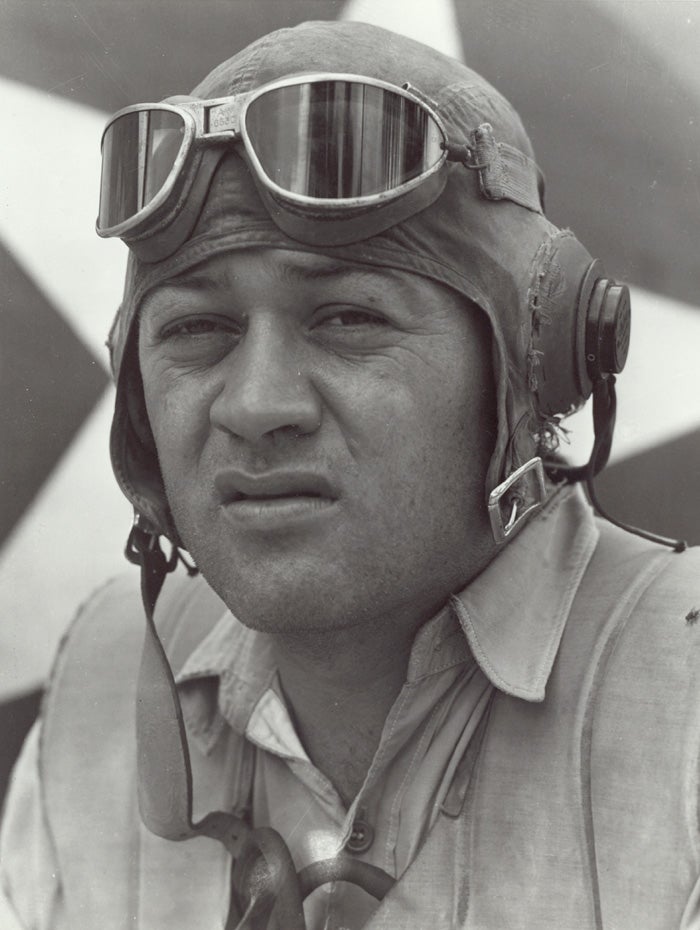
The real Pappy Boyington.
 "Chariotoflove" (chariotoflove)
"Chariotoflove" (chariotoflove)
12/20/2017 at 13:23, STARS: 0
Yeah, I think Conrad was a good choice. The real Pappy looked more like a doughier Sylvester Stallone.
 "Chariotoflove" (chariotoflove)
"Chariotoflove" (chariotoflove)
12/20/2017 at 13:26, STARS: 0
It occurs to me now to be surprised why Jalopnik has not picked up on your writing. This would be great content for FA, perhaps, and you could get paid something.
 "SpeedSix" (speedsix)
"SpeedSix" (speedsix)
12/20/2017 at 15:14, STARS: 1
Well, Gizmodo Media is too cheap to pay well for good writing - they unceremoniously dumped Sean Macdonald and asked Peter Black, SV Wrangler to make some free posts for FP before they would consider him.
 "ttyymmnn" (ttyymmnn)
"ttyymmnn" (ttyymmnn)
12/20/2017 at 16:46, STARS: 1
I’ve had a TDIAH post shared a couple of times in the past. It was fun, since I got lots of comments. But there is policy against doing FP shares now, so yeah, they’d have to hire me. It would be awful easy to justify the time if I were getting paid, though.
 "Chariotoflove" (chariotoflove)
"Chariotoflove" (chariotoflove)
12/20/2017 at 17:27, STARS: 0
I think you would deserve it for all the work you put in.
 "Chariotoflove" (chariotoflove)
"Chariotoflove" (chariotoflove)
12/20/2017 at 17:28, STARS: 0
I still don’t know why they canned Sean. But I wasn’t paying much attention at the time. I just read the articles if they interest me and don’t if they don’t.
 "ttyymmnn" (ttyymmnn)
"ttyymmnn" (ttyymmnn)
12/20/2017 at 17:39, STARS: 1
Thanks. It’s a labor of love.
 "gmporschenut also a fan of hondas" (gmporschenut)
"gmporschenut also a fan of hondas" (gmporschenut)
12/21/2017 at 00:24, STARS: 0
!!! UNKNOWN CONTENT TYPE !!!
seeing this byplane reminded me of another i saw on FB. reminds me of black sheep.